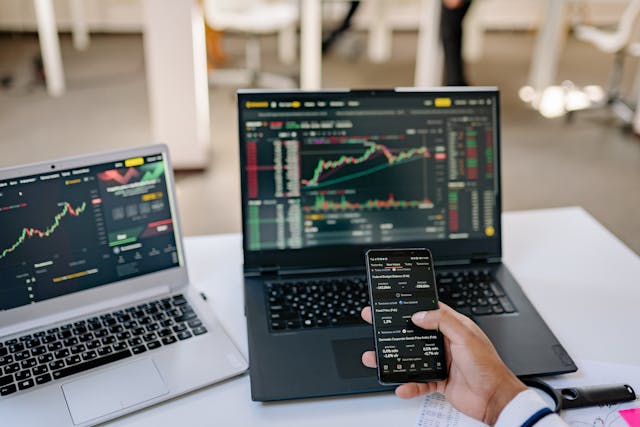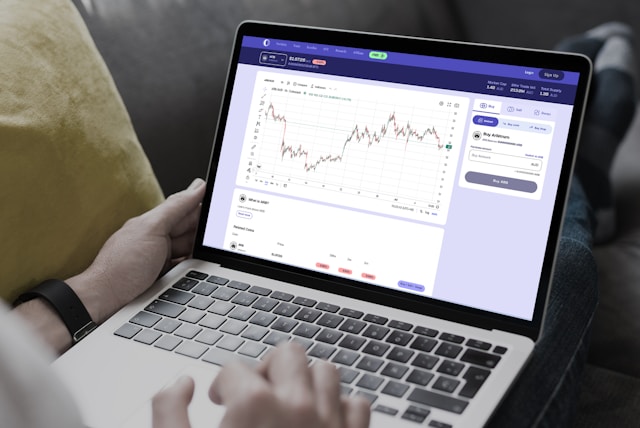Copy Trading Explained: PAMM, MAM, LAM & Social Trading explores how retail and institutional investors alike are gaining exposure to financial markets through automation and expert led strategies. With a surge in interest across global markets, particularly in the Forex space, copy trading is reshaping how individuals approach Forex Trading And Investment. Copy Trading Explained: PAMM, MAM, LAM & Social Trading explores how retail and institutional investors alike are gaining exposure to financial markets through automation and expert led strategies.
Whether you’re a newcomer aiming to learn through observation or a time strapped investor seeking passive returns, copy trading can offer a valuable entry point, if you understand the systems behind it. This guide breaks down the key models: PAMM, MAM, LAM, and the growing ecosystem of social trading platforms.
What Is Copy Trading?
Copy trading is a method that allows one investor to automatically replicate the trades of another. Once you select a trader to follow, your trading account mirrors their positions, often in real time and proportionally based on your capital allocation.
This approach appeals to a broad spectrum of participants, from complete beginners with no strategy of their own to experienced traders seeking diversification. It also plays a role in fund management structures, where pooled funds are managed by a professional on behalf of multiple clients.
The rise of digital platforms, algorithmic tools, and regulatory frameworks has made copy trading more accessible and transparent than ever.
Understanding PAMM Accounts
What Is a PAMM Account?
PAMM stands for Percentage Allocation Management Module. It is a system through which a professional trader (often called a money manager) trades on behalf of multiple investors using pooled funds. Each investor receives profits or losses proportional to their contribution to the total pool.
For instance, if a PAMM account contains $100,000 and you’ve invested $10,000, you own 10% of the account. If the account earns a 5% return that month, you would receive 5% on your $10,000 stake, minus any manager or broker fees.
Advantages of PAMM:
- Simplicity: Set it and forget it style investing.
- Security: Funds typically remain under the client’s brokerage account.
- Scalability: Suitable for a large number of investors.
Drawbacks of PAMM:
- No control over individual trades.
- Dependency on manager performance, a poorly performing manager affects everyone.
- Limited transparency into decision-making processes.
PAMM accounts are well suited for passive investors who trust the trader’s long-term strategy and are comfortable giving up control in exchange for potential returns.
Exploring MAM Accounts
What Is a MAM Account?
MAM stands for Multi Account Manager. Unlike PAMM, MAM accounts offer more flexibility for fund managers. Each client retains their own trading account, but trades are executed from a central platform and copied across accounts using either proportional allocation or customised settings.
MAM is widely used by institutional traders and hedge fund managers managing clients with different risk tolerances and portfolio sizes.
Benefits of MAM:
- Custom risk allocation: Tailor exposure per investor.
- Increased transparency: Clients can see trades as they happen.
- Leverage control: Individual leverage settings per account.
Limitations of MAM:
- Technical complexity: Requires advanced software integration.
- Broker compatibility: Not all brokers offer MAM infrastructure.
- Active oversight: More involvement needed compared to PAMM.
MAM is ideal for fund managers who want the ability to adapt strategies across a diverse investor base.
What Is LAM?
LAM stands for Lot Allocation Management, a more specialised model where trade sizes are assigned in fixed lots, rather than based on proportional investment. This allows a manager to place trades of specific sizes for each account, regardless of the capital amount.
While not as popular in retail settings, LAM is often used in proprietary trading desks or hedge funds executing high frequency or volume sensitive strategies.
Pros of LAM:
- Precise trade control: Customise trade size exactly.
- Advanced strategy support: Great for volume based or algorithmic systems.
Cons of LAM:
- Limited availability: Not supported by many retail brokers.
- Complexity: Not ideal for beginners or passive investors.
- Higher operational costs: Requires specialised infrastructure.
LAM is best suited for professionals or institutions where precision and custom execution are key.
The Growth of Social Trading Platforms
While PAMM, MAM, and LAM are often associated with institutional or semi professional structures, social trading brings the concept of copy trading to the broader retail audience.
Platforms such ZuluTrade, and Myfxbook Autotrade have built ecosystems where retail traders can showcase their performance and allow others to copy their trades automatically.
How Social Trading Works:
- Users browse through a list of traders based on various metrics: ROI, risk score, drawdown, number of followers, and trading style.
- Once a trader is selected, their trades are copied to the user’s account.
- Copying can be paused, adjusted, or stopped at any time.
Advantages of Social Trading:
- Low entry barrier: No need to analyse charts or economic indicators.
- Transparency: Performance stats and trade history are publicly visible.
- Diverse strategies: Follow multiple traders with different approaches.
Disadvantages of Social Trading:
- Unregulated traders: Many signal providers are not licensed professionals.
- Overconfidence: Easy gains in early stages can lead to excessive risk taking.
- Blind copying: Many users copy without understanding the underlying strategy.
Social trading offers education by observation for beginners and a passive income option for those too busy to trade actively. However, it requires the same caution and due diligence as any other form of trading.
Copy Trading vs Traditional Trading and Investment Services
Compared to traditional Trading and Investment Services, copy trading is more accessible and automation friendly. You don’t need to spend years learning technical analysis, monitoring economic data, or staying up all night watching charts.
However, the trade off is a lack of direct control. You’re entrusting your capital to someone else’s decision-making. This makes risk management essential. Just because you’re not placing the trades doesn’t mean you’re not responsible for the outcome.
Transparency, platform security, and strategy validation are critical when selecting a copy trading method, be it PAMM, MAM, LAM, or a social platform.
Key Risks and Considerations
Before starting copy trading, it’s important to weigh the risks:
- Manager performance risk: Even experienced traders have bad months.
- Platform reliability: Choose regulated platforms with robust infrastructure.
- Hidden fees: Some brokers or managers charge performance fees, spreads, or commission on profits.
- Over-allocation: Don’t place too much capital with a single trader or system.
Always assess performance over time, not just in high return months. Look for low drawdowns, consistent gains, and a clear trading methodology.
The Future of Copy Trading
Copy trading is likely to evolve rapidly with the introduction of AI, machine learning, and smarter automation. Some platforms already use AI to suggest traders based on behavioural models and risk adjusted performance.
We may also see hybrid systems emerge, combining algorithmic trading with social insights and automated portfolio balancing. Meanwhile, regulations are catching up to ensure better protections for investors.
As the industry matures, expect more transparency, better performance tracking, and broader access to institutional level strategies.
Copy trading, in its many forms, PAMM, MAM, LAM, and social trading, has reshaped how individuals participate in financial markets. While each model caters to a different type of trader or investor, they all offer an opportunity to benefit from professional experience and automated execution.
Used wisely, copy trading can be a valuable addition to your overall forex trading and investment strategy. But like any financial tool, it demands careful research, responsible allocation, and ongoing evaluation.
By understanding the differences between systems and choosing the right one for your needs, you can leverage the power of automation while staying aligned with your financial goals.


